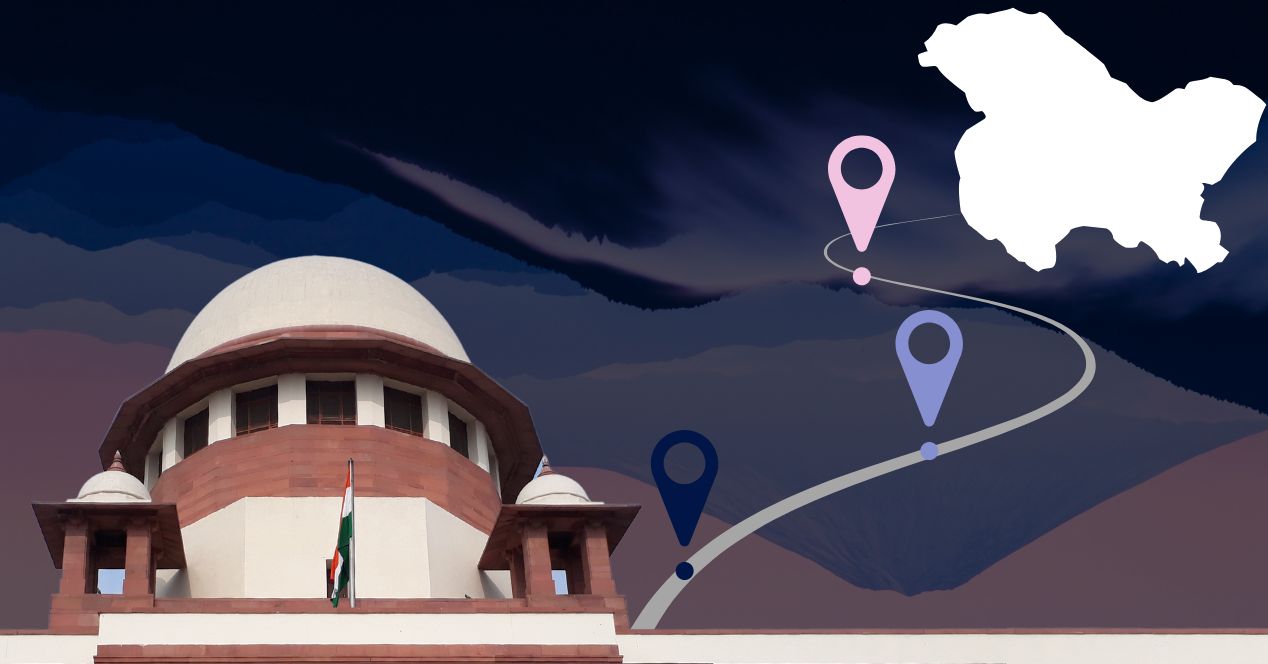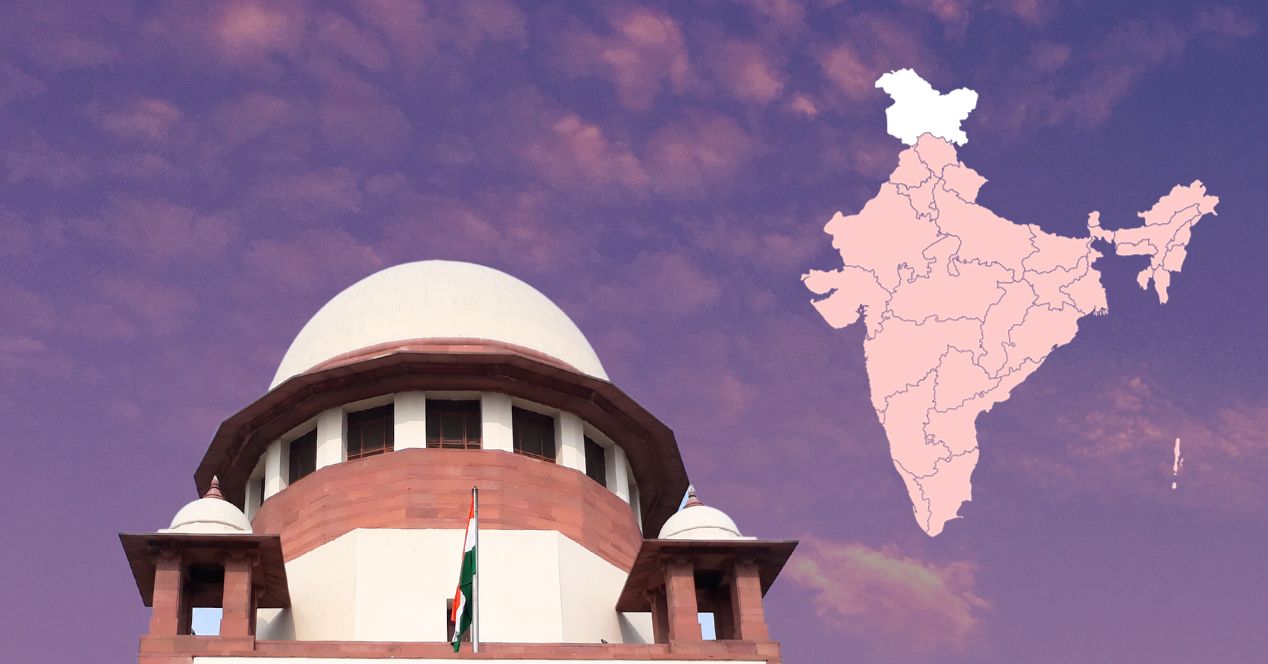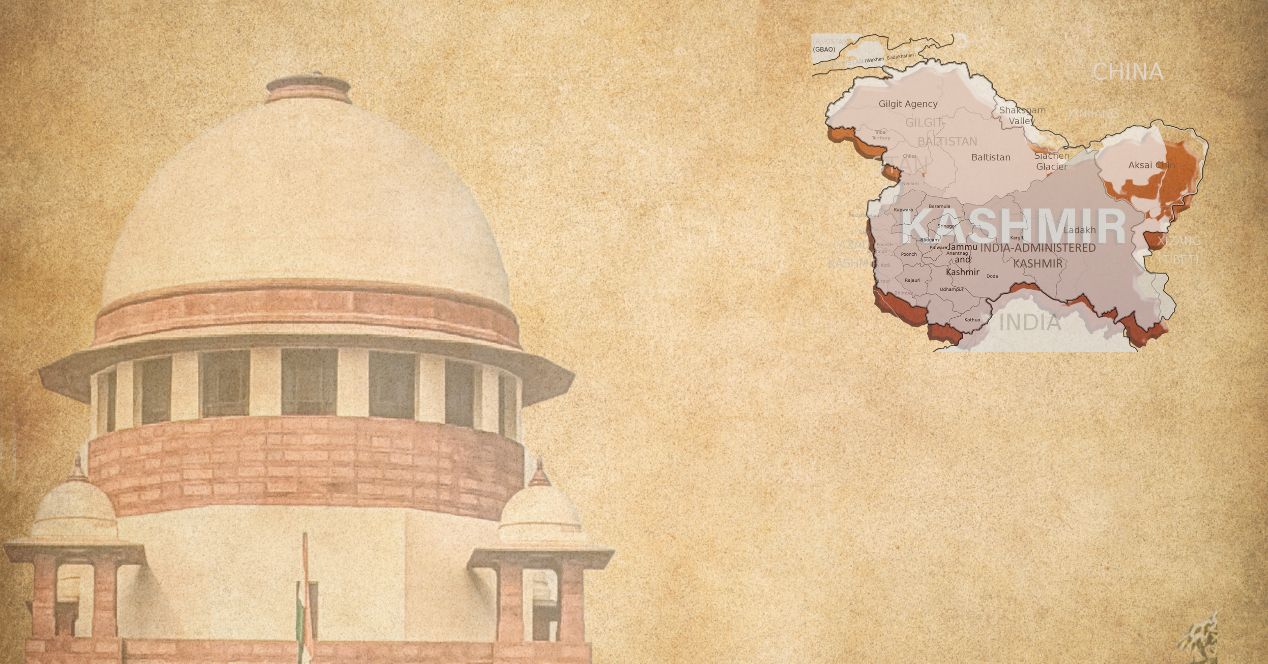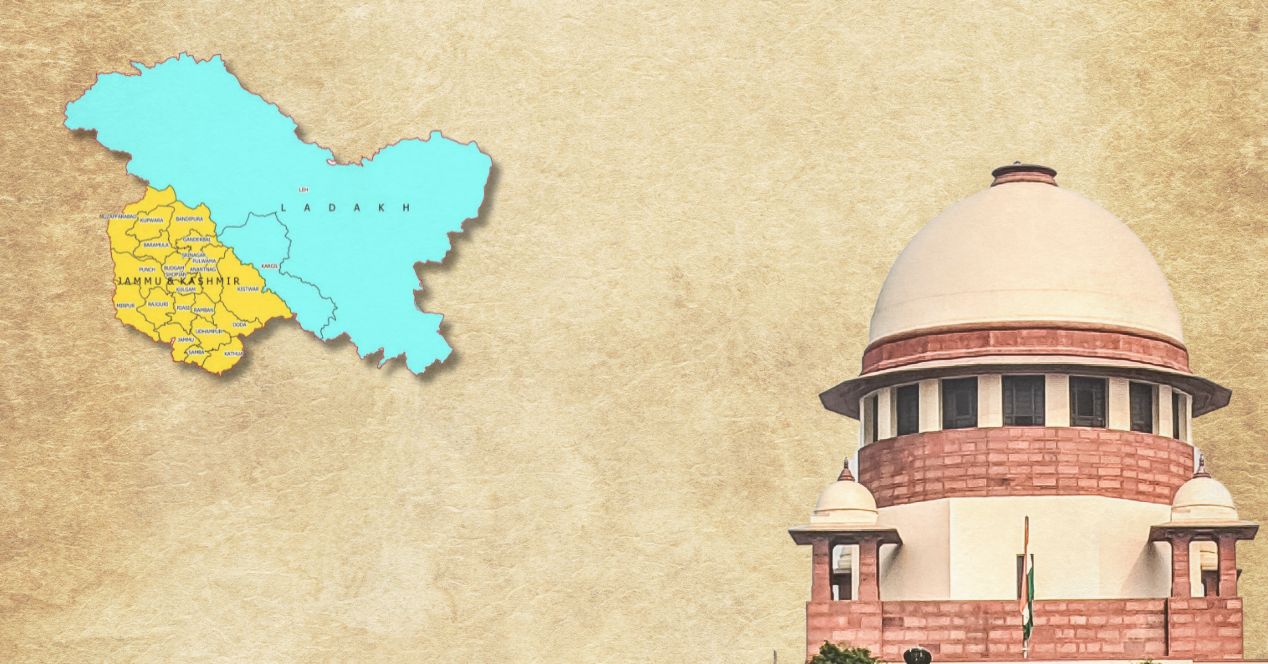Analysis
Article 370: The decision in “Prem Nath Kaul” lies conveniently forgotten
A SC decision from 1968 has long justified Union executive creep in J&K. But what of the equal bench judgement that came a decade before it?
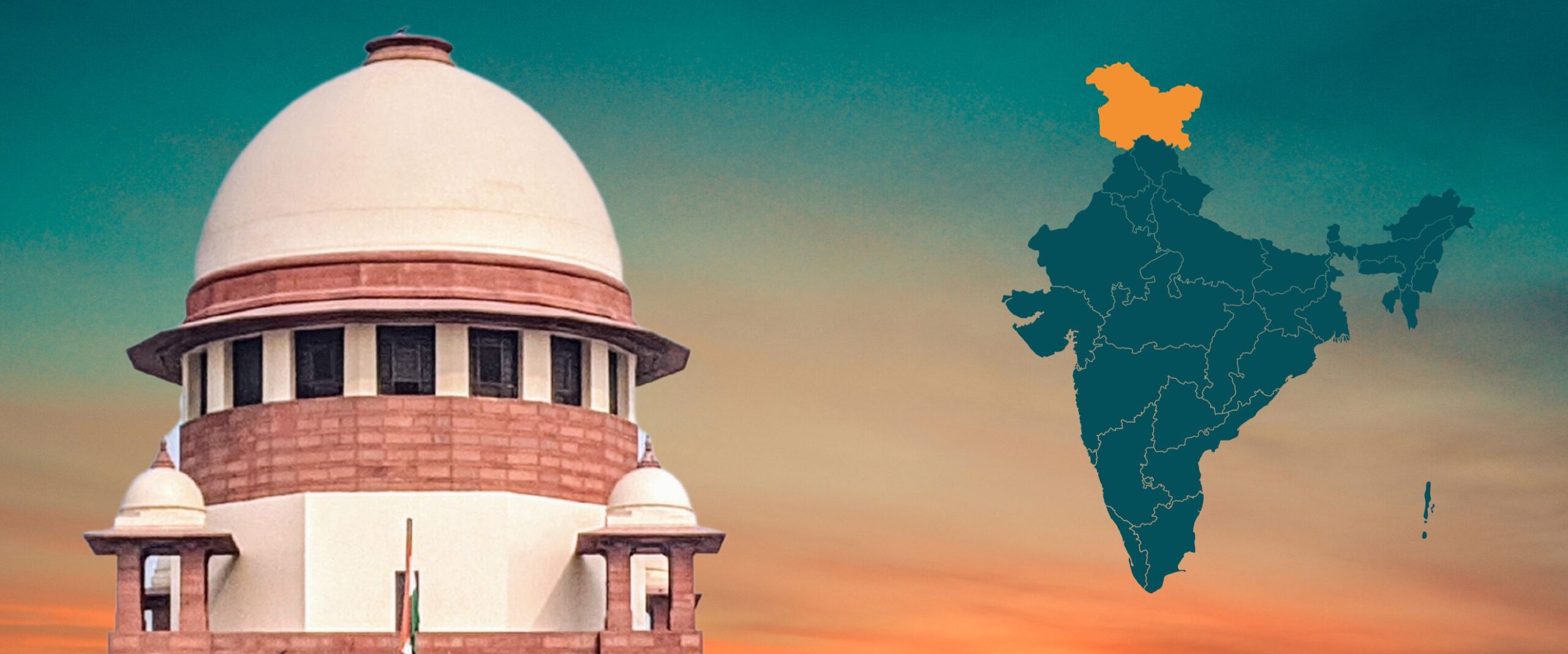
A five-judge Constitution Bench of the Supreme Court recently concluded hearings and reserved judgement in the challenge to the abrogation of Article 370. The first petitions were filed four years ago, in the wake of the Union’s surprise announcement to revoke Jammu and Kashmir’s special status and demote it from a state to two Union Territories.
The hearings, which took place over 16 days of intense and passionate arguments, centred around how the political history of Jammu and Kashmir interacted with not just one but two constitutional schemes. While much academic ink has been spilt on scrutinising the constitutionality of the Government of India’s decision, little has been written on how the Supreme Court’s precedents interact with each other and what impact they could have on the present case.
In this piece, I want to focus on the narrow issue of two conflicting decisions by five-judge Constitution Benches: the ones in Prem Nath Kaul v State of J&K (1959) and Sampat Prakash v State of J&K (1968). Though both these judgements were cited liberally by the parties during the August 2023 hearings, there’s a reason why we didn’t hear much about their conflict—that question had been dismissed by the Court in an earlier order. This was in March 2020, when the matter was titled Shah Faesal and Ors. v Union of India.
The Role of the Constituent Assembly
The issue in Shah Faesal struck at the heart of the legal gymnastics by which the Union carried out the abrogation. In August 2019, a Presidential Order replaced the words “Constituent Assembly” in Article 370 with “Legislative Assembly.” Given that the State was under President’s Rule, the Union Parliament assumed the role of the Legislative Assembly. (The preparatory work had been done earlier: President’s Rule had been imposed in December 2018.) So the “concurrence” of the Constituent Assembly, which was required for the revocation or alteration of Article 370, was, in effect, the concurrence of Parliament.
The five-judge bench decisions in Prem Nath and Sampat Prakash interpreted Article 370 differently. (Both judgements came after the J&K Constituent Assembly was dissolved for good in 1957.) A plain reading of the ruling in Prem Nath establishes that the Court strongly emphasised the requirement of ratification by Constituent Assembly to extend any provision of the Constitution of India to J&K.
To drive home the centrality of the J&K Constituent Assembly to the scheme of things, the Court looked at clauses (2) and (3) of Article 370. Clause (2), the Court said, showed that the “Constitution makers attached great importance to the final decision of the Constituent Assembly” by mandating that any matters for which the government has provided its “concurrence” before the formation of the Assembly had to be placed before it for consideration. The proviso to clause (3)—which mandated the “recommendation” of the Constituent Assembly for the President to alter or revoke the Article—also “emphasises the importance which was attached to the final decision” of the Assembly “in regard to relevant matters covered by Article 370.”
Now, contrast this acknowledgement of the role of the J&K Constituent Assembly with the way that it was downplayed almost a decade later in Sampat Prakash. On clause (2), the Court conveniently noted that the facts of the case covered a circumstance when the Constituent Assembly had not yet been formed and that it “makes no mention at all of the completion of the work of the Constituent Assembly or its dissolution.”
With respect to clause (3), the Court paradoxically put the onus on the continuance of Article 370 on the Constituent Assembly—it was inferred that the Assembly “did not desire that this Article should cease to be operative” because it had not recommended its revocation in its lifetime. In fact, the Court suggested, the Assembly had “expressed its agreement to the continued operation of this Article” in 1952 by making a recommendation to amend the explanation to clause (1).
These interpretive approaches to the role of the Constituent Assembly form the crux of the conflict between the two judgements. Prem Nath relies on an interpretation of the bare text of the Constitution, Sampat Prakash infers and extrapolates its supposed silences.
Some of the petitioners in Shah Faesal contended that only a higher Constitution Bench of seven judges could iron out this conflict. But the Court declined the plea, stating that the two cases have different “facts and context.” Ironically, counsel like Rajeev Dhavan, C.U. Singh and Gopal Sankaranarayanan, who were representing some of the petitioners, opposed the reference to a higher bench, arguing that both Prem Nath and Sampat Prakash “should be studied in their context and hence have limited application.”
The Court agreed with this reasoning on the grounds that Prem Nath merely related to the “legislative competence of the Yuvaraj” after acceding to the Union of India, and didn’t have to do with deciding the nature of Article 370. In Prem Nath, the legislation that was challenged was the Big Landed Estates Abolition Act, 1950, which was enacted by the Maharaja of J&K to transfer land to tillers. In Sampat Prakash, the incarcerated petitioner had challenged the modification of Presidential Orders—under Article 370—that had extended the validity of a preventive detention law.
In the Court’s reading in Shah Faesal, Sampat Prakash was the first time that the Court directly delineated the question of continuance of powers under Article 370 after the dissolution of the Constituent Assembly of the State.
Opening the Floodgate
To me, this reading is especially problematic. That’s because Sampat Prakash is the very ruling that gave the President a blatantly wide latitude to modify the provisions of the Indian Constitution while applying them to J&K. Here’s what the Court had said in Sampat Prakash:
“Thus, in law, the word ‘modify’ may just mean ‘vary,’ i.e., amend, and when Art. 370(1) says that the President may apply the provisions of the Constitution to the State of Jammu & Kashmir with such modifications as he may by order specify, it means that he may vary (i.e., amend) the provisions of the Constitution in its application to the State of Jammu & Kashmir. We are, therefore, of the opinion that in the context of the Constitution, we must give the widest effect to the meaning of the word ‘modification’ used in Art. 370(1), and in that sense, it includes an amendment. There is no reason to limit the word ‘modifications’ as used in Art. 370(1) only to such modifications as do not make any ‘radical transformation.’”
By further saying that the amendment provisions in Article 368 does not “necessarily curtail the power of the President under Article 370,” the decision in Sampat Prakash legitimised the exercise of sweeping discretion by the executive when it came to extending the provisions of the Indian Constitution to J&K. This state of affairs flies in the face of the logic of Article 370, which was meant to limit the law-making power of Parliament in connection with J&K.
This particular seed of constitutional erosion in J&K had previously been sown by another five-judge bench of the Court in Puranlal Lakhanpal v The President of India and Ors. (1961). In Puranlal, the Court had upheld a Presidential Order under Article 370(1) that amended Article 81 to allow the President to appoint the representatives of the state in the Lok Sabha on the recommendation of the state legislature.
All the presidential and Supreme Court orders since Sampat Prakash appear to have toed its interpretive line. One prominent—and early—instance is Mohammed Maqbool Damnoo v State of J&K (1972), where the Supreme Court upheld a Presidential Order replacing an elected ‘Sadr-i-Riyasat’ with an appointed State Governor. That executive decision, made in 1963, paved the path for Union interference and supervision of Jammu and Kashmir’s affairs.
Prem Nath aligns with the constitutional founding of J&K
In all of this, the Court’s decision in Prem Nath is conspicuous by its absence. Clearly, the clean interpretation of the constitutional scheme in that matter was inconvenient to the Union’s need to break away from the terms of a historical promise.
In the Shah Faesal order, the Court reasoned that the ratio of Prem Nath had nothing to do with the permanence of Article 370. Even assuming that the Court was faced with only the narrow question of the Maharaja’s power to enact the estates abolition legislation in Prem Nath, the fact is that the Court assuredly traversed wider issues of sovereignty and Constituent Assembly standing in that decision.
My submission is that Prem Nath should have been considered as it squarely aligns with the constitutional founding of J&K, of which the state executive and its Constituent Assembly formed a central part. In Prem Nath, the Court was unambiguous in its finding that presidential power under Article 370 was solely dependent on the concurrence of the Constituent Assembly.
Secondly, the Court had said in Prem Nath that the signing of the Instrument of Accession by Maharaja did not alter his sovereignty over the state. The Court cited Clause 8 of the IoA, which, in clear terms, had made the Maharaja’s sovereignty in and over the state immune from anything stated in other clauses of the IoA.
The reasoning in Prem Nath was followed by the J&K High Court in Union of India v. S Mubarik Shah Naqishbandi (2015), with the Court stating that “the State has the absolute sovereign power to legislate laws touching the rights of its State subjects/citizens qua their immovable properties” in terms of section 5 of the Constitution of J&K. (The ruling was reversed by the Supreme Court on appeal— “J&K has no vestige of sovereignty outside the Constitution of India and its own Constitution, which is subordinate to the Constitution of India.”)
My submission is that the decision in Sampat Prakash is per incuriam because it didn’t even consider the judgement of a coordinate bench in Prem Nath. In both cases, the judges had to dive into the weeds of the special constitutional status of the state, so it follows that the decision in Prem Nath had to have been considered—and ideally, followed—in Sampat Prakash.
Given the stakes of the Article 370 abrogation challenge and the fact that Sampat Prakash had legitimised erosion of constitutional autonomy through executive fiat, there were more reasons for the Supreme Court to refer the matter to a larger Constitution Bench. Though that did not happen, one hopes against hope that the SC will reconsider the conflict between the judgements as it puts together its decision this time around.
Burhan Majid is an Assistant Professor of Law at Jamia Hamdard, New Delhi and a doctoral fellow at NALSAR University of Law, Hyderabad. He tweets @burhanmajid.

